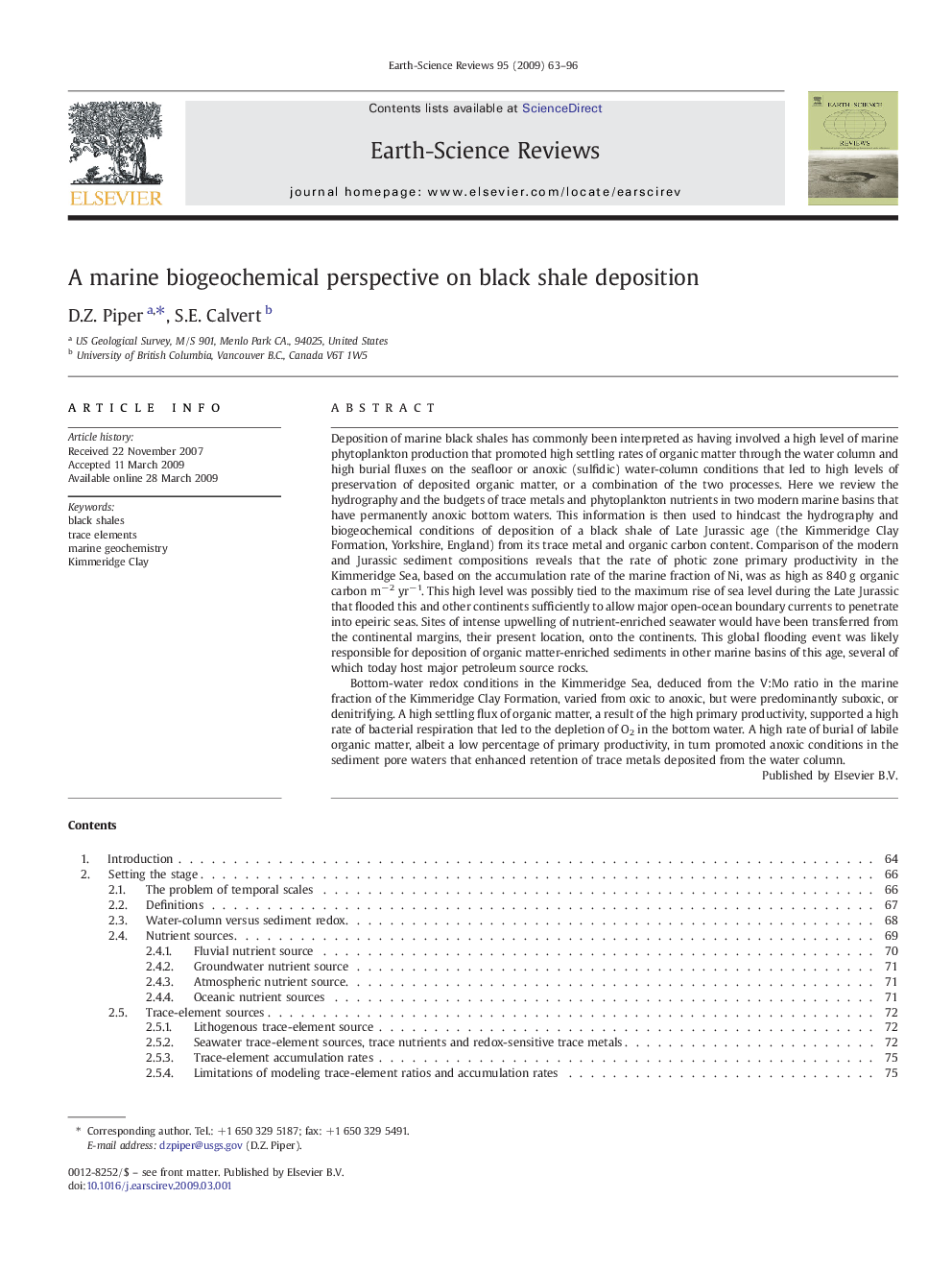| کد مقاله | کد نشریه | سال انتشار | مقاله انگلیسی | نسخه تمام متن |
|---|---|---|---|---|
| 4726204 | 1640022 | 2009 | 34 صفحه PDF | دانلود رایگان |

Deposition of marine black shales has commonly been interpreted as having involved a high level of marine phytoplankton production that promoted high settling rates of organic matter through the water column and high burial fluxes on the seafloor or anoxic (sulfidic) water-column conditions that led to high levels of preservation of deposited organic matter, or a combination of the two processes. Here we review the hydrography and the budgets of trace metals and phytoplankton nutrients in two modern marine basins that have permanently anoxic bottom waters. This information is then used to hindcast the hydrography and biogeochemical conditions of deposition of a black shale of Late Jurassic age (the Kimmeridge Clay Formation, Yorkshire, England) from its trace metal and organic carbon content. Comparison of the modern and Jurassic sediment compositions reveals that the rate of photic zone primary productivity in the Kimmeridge Sea, based on the accumulation rate of the marine fraction of Ni, was as high as 840 g organic carbon m− 2 yr−1. This high level was possibly tied to the maximum rise of sea level during the Late Jurassic that flooded this and other continents sufficiently to allow major open-ocean boundary currents to penetrate into epeiric seas. Sites of intense upwelling of nutrient-enriched seawater would have been transferred from the continental margins, their present location, onto the continents. This global flooding event was likely responsible for deposition of organic matter-enriched sediments in other marine basins of this age, several of which today host major petroleum source rocks.Bottom-water redox conditions in the Kimmeridge Sea, deduced from the V:Mo ratio in the marine fraction of the Kimmeridge Clay Formation, varied from oxic to anoxic, but were predominantly suboxic, or denitrifying. A high settling flux of organic matter, a result of the high primary productivity, supported a high rate of bacterial respiration that led to the depletion of O2 in the bottom water. A high rate of burial of labile organic matter, albeit a low percentage of primary productivity, in turn promoted anoxic conditions in the sediment pore waters that enhanced retention of trace metals deposited from the water column.
Journal: Earth-Science Reviews - Volume 95, Issues 1–2, June 2009, Pages 63–96